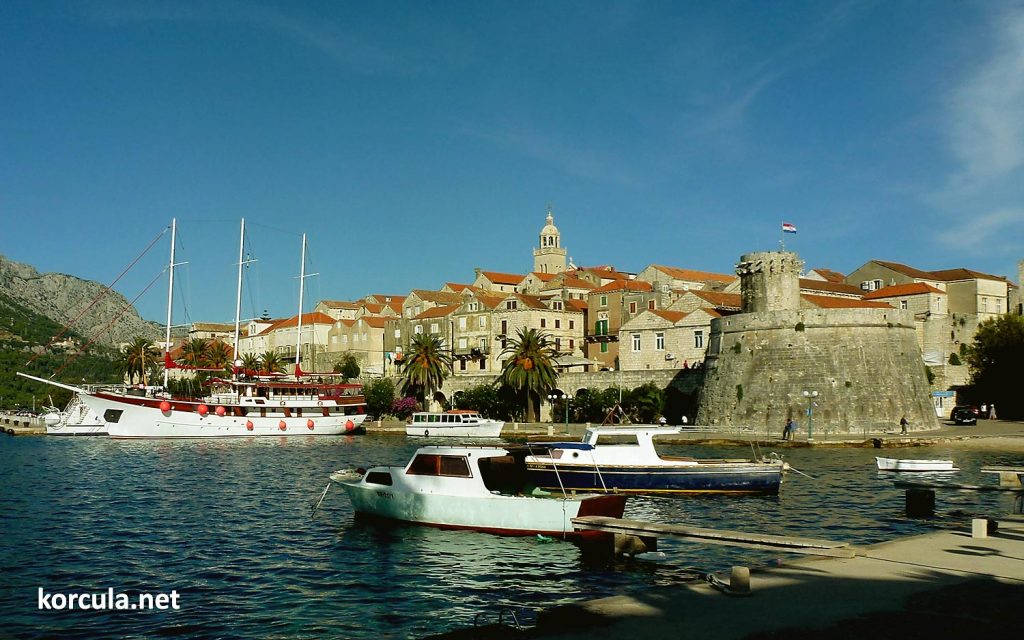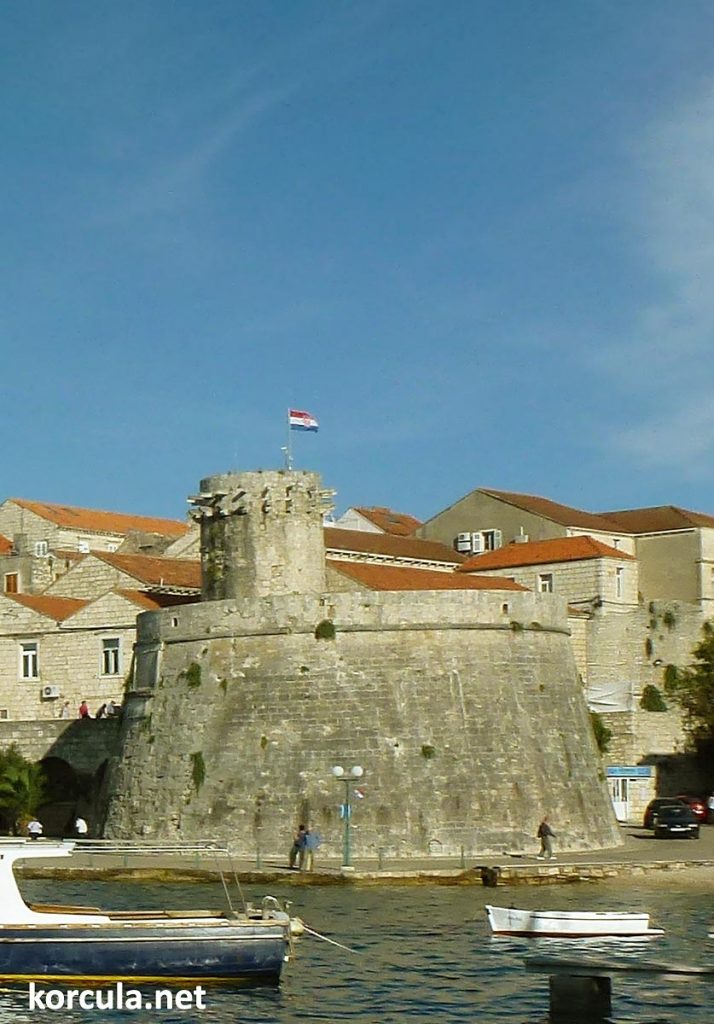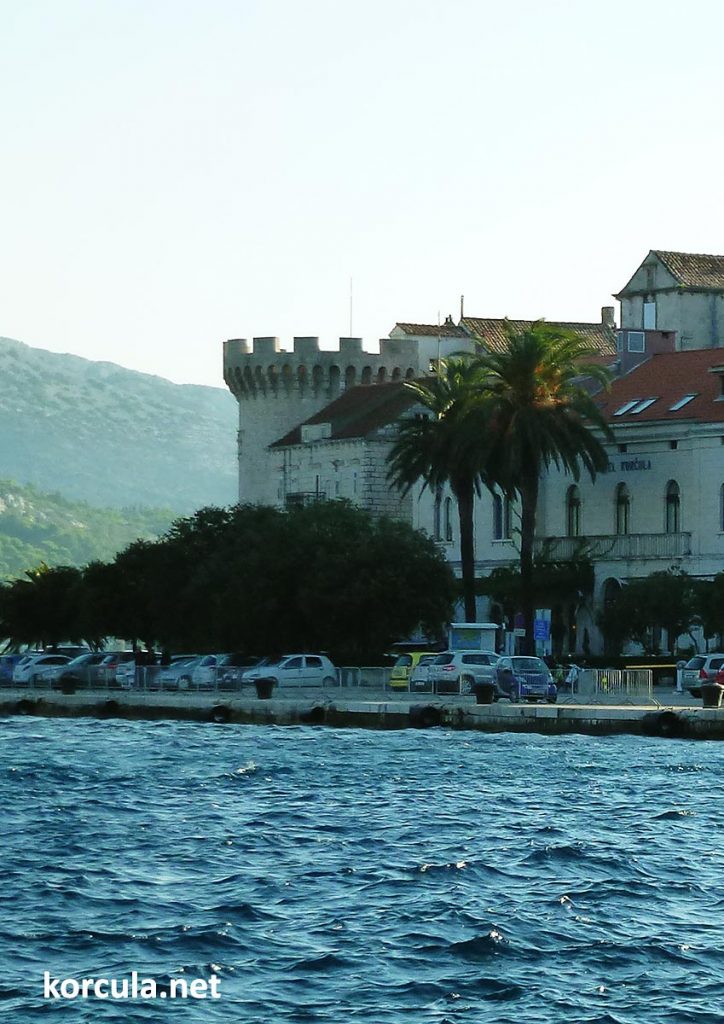History of Korcula Old Town
Numerous precious experiences of all the history of town’s building seem to be sublimated in the urban organization of Korcula Old Town.
It grew out of the remote prehistorical instinct for choosing a place of defence, later became an Illyrian observation-post from which they could control the shipping, then a pirates centre for plunder and attacks on galleys, before encountering the planning of the ancient Greeks who founded numerous towns in the Mediterranean.

Urban Development
It is difficult to precisely follow the development of the urbanization of Korcula Old Town, mostly because the town has not yet been systematically archaeologically surveyed. However, there is enough information to form a sound assumption about its development:
The Strategic Peninsula
The small peninsula on which Korcula Old Town is situated was probably used as a watch-tower over the channel, as a fortified and settled strategic point. Indeed, military-strategic reasons have traditionally motivated urban development.
The importance of the channel between Peljesac peninsula and Korcula island was strategically obvious in the Hellenic world, so Ancient Greeks founded their first colony in the 4th century BC in Lumbarda.
The Greek presence in Korcula, and later the Roman one, stimulated the further urbanization of Korcula, setting the basis for its development into an early medieval town on the new social and economic structures of the Croatian ethnic elements.
The town was first time mentioned by the Byzantine emperor and historian Porfirogenet in the 10th century.
Many deep transformations occurred in the period up to the 13th century, but the primary lay-out of Korcula had already been designed.
Popular Routes: Split to Korcula, Korcula to Split, Dubrovnik to Korcula, Korcula to Dubrovnik

The Town Walls
The large town’s wall defined the urban nucleus, and the ground plan for the streets defined possible building areas inside the town walls.
There are only two areas which are favoured by their position and dimensions and they were taken over by the two traditional forms of power; the church is built on an enlarged plateau on the top of the little peninsula, and the Governor’s Palace with the Town Hall occupies a larger space in the South-Western part of the town.
The only permanent common concern was the town walls, the last refuge in times of war. They were constantly improved, fortified and adapted to new tactics and weapons.
Phases of the Town Walls Development
The Old Town Walls underwent three phases of development:
- the first phase dating from the 13th century, whose remains can be seen in the foundation of the existing walls,
- the medieval phase dating from the 14th century
- and the Renaissance phase from the 15th and the 16th centuries.
In the 13th century, the town was encompassed by a system of high square towers connected by a relatively weak wall. It is supposed that twelve of these towers made a defensive circle around the town, with the dominant entrance into the town on the Southside, from the land.
Eight towers still existed in the 19th century, but nowadays only four of them are left, and they have lost their primary appearance due to much adaptation and modification.
The fortifications were strengthened during the presence of Venice the 15th and the 16th centuries, when most of the double-walls were built, including the front wall as a supporting wall to the main defensive wall, as well as the round and semi-round towers. In that period the following towers were built:
- Small Governor’s Tower (Lombardo) in 1448
- Kanavelic Tower (Barbarigo) in 1485-88
- Zakrjan Tower (Viar) in 1483
- the tower near the All Saints Church (Capello) in 1493
- Large Governor’s Tower (Balbi) in 1496.
- The Large and Small Revelin towers were renovated at the same time
On the western part of the town, the guard-posts on the crown of the wall were strengthened and enlarged in 1592, 1594 and 1598 while South-East square tower was enlarged in 1644.

There were few town governors who did not leave their mark on the walls of Korcula. At one time towers were all named after them. Since the population of the town and the island was relatively small and the amount of money at their disposal was modest, it demanded a great effort to build and fortify the town, especially the town walls.
The defence system was almost completely defined in the 16th century.
The mighty silhouette of the fortified town could be seen from distant Hvar island to the West to the Korcula Archipelago to the East.
The Western and Eastern piers (Riva) had not yet been built, but the town was emerging from the sea.
